| News Archive |

|
2008: Jan Feb Mar Apr May Jun Jul Aug Sep Oct Nov Dec
2007: Jan Feb Mar Apr May Jun Jul Aug Sep Oct Nov Dec
2006: Jan Feb Mar Apr May Jun Jul Aug Sep Oct Nov Dec
2005: Jan Feb Mar Apr May Jun Jul Aug Sep Oct Nov Dec
2004: Jan Feb Mar Apr May Jun Jul Aug Sep Oct Nov Dec

News: August 2008
Back to latest news

|
Earth’s leaky atmosphere
ESA’s formation-flying Cluster satellites have discovered the physical mechanism that is driving the constant leak of oxygen out of Earth’s atmosphere and into space: the Earth’s own magnetic field.
 FULL STORY FULL STORY |
 |
 |
 |
The missing link between meteorites and asteroids
Scientists have often wondered why only a tiny fraction of meteorites found on Earth match the vast majority of asteroids that orbit in our local neighbourhood, but new research suggests the solution could be in the Sun.
 FULL STORY FULL STORY |
 |
 |
 |
Clash of clusters provides new dark matter clue
A dramatic collision between galaxy clusters captured by the Hubble and Chandra space telescopes provides striking evidence for the existence of dark matter as it separates from ordinary matter.
 FULL STORY FULL STORY
 |
 |
 |
 |
Cassini pinpoints source of Enceladus jets
Thanks to an amazing new array of photographs of Saturn’s geologically active moon Enceladus, Cassini has pinpointed precisely the source of the icy jets seen erupting from the surface in previous fly-bys.
 FULL STORY FULL STORY
 |
 |
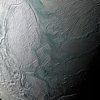 |
| |
Opportunity to leave Victoria Crater
After nearly a year of daring exploration within Victoria Crater, NASA’s Mars Exploration rover Opportunity is heading back out to the surrounding Martian plains to examine exposed ancient rock layers, and boulders thrown from massive impact events.
 FULL STORY FULL STORY
 |
 |
 |
 |
GLAST, renamed Fermi, reveals first all-sky image
NASA's newest space observatory GLAST has begun its mission of exploring the Universe in high-energy gamma rays and has been renamed the Fermi Gamma-ray Space Telescope in honour of Professor Enrico Fermi, a pioneer of high-energy physics on which the mission is founded.
 FULL STORY FULL STORY
 |
 |
 |
 |
XMM discovers monster galaxy cluster
ESA's orbiting X-ray observatory XMM-Newton has discovered a cosmic needle in the haystack of space: the most massive galaxy cluster ever seen in the distant Universe, and one which confirms the existence of dark energy.
 FULL STORY FULL STORY
 |
 |
 |
 |
Generations of stars pose for family portrait
In celebration of Spitzer’s five years in orbit, a stunning new image reveals the family portrait of a star-forming inferno studded with multiple generations of brilliant stars, and provides dramatic new evidence that massive stars can trigger the birth of stellar newborns through their savage winds and radiation.
 FULL STORY FULL STORY
 |
 |
 |
 |
Phoenix digs into extended mission
Today, the 90th Martian sol and the end of the originally planned primary mission, Phoenix will perform the challenging task of scooping up soil from the deepest trench ever dug on Mars.
 FULL STORY FULL STORY
 |
 |
 |
 |
The interplanetary
mapping maverick
In an exclusive interview to coincide with the September issue of Astronomy Now, the Planetary Science Institute's Dr Robert Gaskell discusses his innovative mapping technique that is bringing the diverse surfaces of the Solar System to life.
 FULL STORY FULL STORY |
 |
 |
 |
Solar System’s newest member points to ‘inner Oort Cloud’
An ice-rock minor planet 30 to 60 miles in diameter, discovered two years ago between the orbits of Uranus and Neptune (each being a mean distance of 2.72 and 4.35 billion kilometres from Earth respectively) could be a member of the ‘inner Oort Cloud’.
 FULL STORY FULL STORY |
 |
 |
 |
The great Pluto debate continues
In 2006, the International Astronomical Union (IAU) reclassified Solar System objects such that Pluto became a dwarf planet, and in June of this year it was placed into the ‘plutoid’ sub-category. Now astronomers have reopened the debate at this week’s Great Planet Debate: Science as a Process conference.
 FULL STORY FULL STORY
 |
 |
 |
 |
Enceladus images “dazzling success”
The images from Cassini’s latest maneuver around icy Enceladus are already back in terrestrial hands in what is said to be a “dazzling success” by Cassini Imaging Team Leader Carolyn Porco.
 FULL STORY FULL STORY
 |
 |
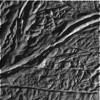 |
 |
Partial lunar eclipse this Saturday
Following hot on the heels of the solar eclipse at the start of the month is a partial lunar eclipse, gracing our evening skies on Saturday 16 August.
 FULL STORY FULL STORY
 |
 |
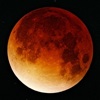 |
 |
Cassini swoops past Enceladus
The Cassini spacecraft flew by Saturn’s enigmatic moon Enceladus on Monday to get a closer look at the ‘tiger stripe’ features and associated icy jets that emanate from the fractures, and has begun sending data back to Earth.
 FULL STORY FULL STORY
 |
 |
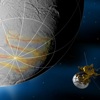 |
 |
Perseids hit maximum
this week
The evening of the 12th August and morning of the 13th August will see the annual maximum of the Perseid meteor shower. Download Astronomy Now’s Perseid Observing Log and help tell the story of this year’s display.
 FULL STORY FULL STORY
 |
 |
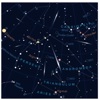 |
 |
Hubble celebrates 100,000 trips around the Earth
The Hubble Space Telescope is today celebrating its 100,000th orbit around the Earth since its launch over 18 years ago, with the release of a spectacular image of a fantasy-like landscape embellished with scenes of stellar birth and renewal.
 FULL STORY FULL STORY
 |
 |
 |
 |
Computer simulations put Solar System in its place
Traditional theories of Solar System formation assume our neighbourhood to be pretty run of the mill, but in a new study using data from 300 exoplanets discovered orbiting other stars, our planetary haven turns out to be one of a kind.
 FULL STORY FULL STORY
 |
 |
 |
 |
Dark matter clumps and streams in Milky Way
Using powerful supercomputer simulations, researchers have reason to believe that dense clumps and streams of dark matter lurk in the inner regions of the Milky Way’s galactic halo, in the same neighborhood as our Solar System.
 FULL STORY FULL STORY
 |
 |
 |
 |
Globular clusters reveal secrets of galactic cannibalism
Thousands of globular clusters more than five billion years old have been resolved in the Virgo cluster of galaxies by the Hubble Space Telescope, providing detailed information about their creation and existence.
 FULL STORY FULL STORY
 |
 |
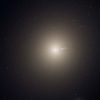 |
 |
Martian salts analysed for habitability potential
Phoenix mission scientists are currently investigating perchlorate salts detected in soil analysed by the wet chemistry laboratory, but the jury is still out as to the importance of the discovery for life on Mars.
 FULL STORY FULL STORY
 |
 |
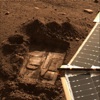 |
 |
Cosmic ghost haunts
Galaxy Zoo
A volunteer in the Galaxy Zoo campaign has identified the most mysterious and unique object found yet amongst the menagerie of one million galaxies available for online classification by armchair astronomers across the globe: a cosmic ghost.
 FULL STORY FULL STORY
 |
 |
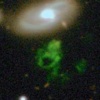 |
 |
Rosetta sets Steins in sights
ESA’s Rosetta spacecraft has begun its survey of asteroid (2867) Steins at a distance of 24 million kilometres, in preparation for a much closer encounter next month.
 FULL STORY FULL STORY
 |
 |
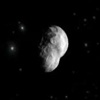 |
 |
The very first stars
Thanks to a revolutionary new computer simulation created by astrophysicists from Japan and America, the very first instance that stars breathed light on the Universe have been mimicked.
 FULL STORY FULL STORY
 |
 |
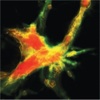 |
 |
Phoenix tastes water
on Mars
After weeks of struggling to deliver a sample of icy soil to Phoenix’s onboard laboratory, the lander’s ovens have finally received their bounty and provided the first direct evidence for water on Mars.
 FULL STORY FULL STORY
 |
 |
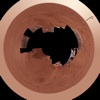 |
 |
 |

Back to latest news |
 |

